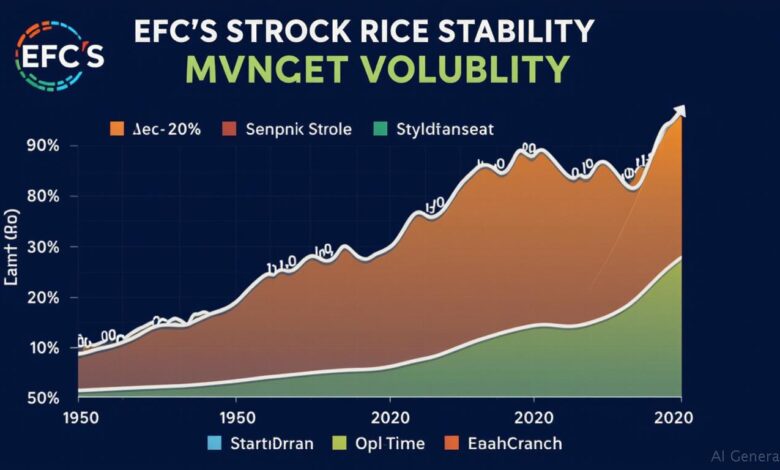EFC Dividend History: A Complete Guide for Income Investors

Dividend stocks have long been a favorite among investors who seek consistent income streams in addition to potential capital appreciation. One company that has drawn attention for its attractive payouts is Ellington Financial Inc. (EFC). Known for its high dividend yield and monthly payment structure, EFC has become a popular option among dividend-focused investors.
This article will provide a deep dive into the EFC dividend history, why it matters, how consistent the payouts have been, and what future investors can expect from this REIT’s dividend policy.
What Is EFC and Why Is Its Dividend Important?
Ellington Financial Inc. (ticker: EFC) is a real estate investment trust (REIT) specializing in mortgage-backed securities, residential and commercial mortgage loans, and other financial assets.
As a REIT, EFC must return at least 90% of taxable income to shareholders in the form of dividends. This makes dividend history one of the most critical aspects for investors considering this stock.
EFC’s monthly dividends make it particularly appealing for those who rely on regular income, such as retirees, because they provide more frequent payouts compared to the quarterly dividends paid by most companies.
Why Do Investors Pay Attention to EFC Dividend History?
When evaluating a dividend-paying stock, history matters. For EFC, its dividend history provides insight into:
- Reliability – Has the company consistently paid dividends over the years?
- Growth or Reduction – Have dividends been increasing, stable, or declining?
- Yield Potential – Does the dividend yield outperform other REITs?
- Sustainability – Is the payout ratio sustainable given earnings?
EFC’s dividend history shows resilience, but also adjustments when financial markets or interest rates create pressure on earnings.
How Often Does EFC Pay Dividends?
Unlike most companies that distribute dividends quarterly, EFC pays dividends monthly.
This means investors receive 12 payouts per year rather than just 4, creating more regular cash flow. For income-focused investors, monthly dividends provide an opportunity for faster reinvestment and consistent financial planning.
What Is the Current Dividend Policy of EFC?
As of 2025, EFC pays $0.13 per share every month, which adds up to $1.56 annually.
- Annual Dividend: $1.56 per share
- Dividend Yield: Approximately 11% to 11.4%
- Payout Ratio: Over 100% (around 120%–127%)
This payout is considered generous compared to other REITs, but the high payout ratio also signals potential risks to sustainability.
EFC Dividend History: Year-by-Year Overview
Over the past several years, EFC has paid consistent dividends, though there have been some reductions when financial pressures arose.
- 2019 – Annual dividend around $1.80
- 2020 – Reduced slightly due to pandemic-related uncertainties
- 2021 – Annualized payout $1.56
- 2022 – Increased again to around $1.80
- 2023 – Reduced to $1.62 due to market volatility
- 2024 – Maintained at $1.56 annually
- 2025 – Currently $0.13 monthly, $1.56 annually
This shows that while the company occasionally adjusts dividends, it has maintained a strong track record of never suspending payouts completely.
Has EFC Ever Cut Its Dividend?
Yes, EFC has cut its dividend several times. Most recently, the monthly dividend was reduced from $0.15 per share in 2023 to $0.13 per share in 2024.
Dividend cuts are common among REITs that operate in mortgage and credit markets, especially when interest rate changes affect borrowing costs and portfolio returns.
However, the important point is that EFC has always continued paying dividends, even when the amounts were reduced.
Why Is EFC Dividend Yield So High?
At around 11% to 12%, EFC’s dividend yield is considered very high compared to the average REIT yield of 5% to 7%.
This high yield is due to:
- Exposure to mortgage-backed securities, which offer higher returns but greater risks.
- EFC’s commitment to paying dividends monthly.
- The company’s share price being relatively low, which mathematically increases the yield percentage.
High yields are attractive, but they can also signal higher risks compared to more stable, lower-yielding dividend stocks.
Is EFC Dividend Sustainable?
Sustainability is one of the biggest questions when looking at dividend history.
- Positive Factor: EFC has never suspended its dividend, showing commitment.
- Risk Factor: The payout ratio is over 100%, meaning the company sometimes pays out more than it earns.
- Market Dependence: Because EFC operates in mortgage and credit markets, interest rate changes significantly impact its earnings and ability to maintain dividends.
So while the dividend is attractive, it is also exposed to market risks. Investors should weigh the risks before relying too heavily on EFC for income.
Comparing EFC Dividend History With Other REITs
To understand EFC better, it’s helpful to compare it with other popular REITs:
- Realty Income (O) – Also pays monthly, but with lower yields (around 5%) and more stability.
- AGNC Investment (AGNC) – Similar to EFC, offers high yields but has also cut dividends several times.
- Annaly Capital Management (NLY) – Another high-yield mortgage REIT, but more volatile in dividend trends.
Compared to peers, EFC stands out for its monthly payments and relatively high consistency despite market challenges.
What Does the Future Hold for EFC Dividends?
Looking ahead, several factors will influence whether EFC maintains or changes its dividend:
- Interest Rates – If rates stabilize or decline, EFC may have more room to sustain payouts.
- Earnings Growth – Expanding its investment portfolio could support dividend stability.
- Economic Conditions – Recessions or mortgage defaults could pressure earnings.
While it is difficult to predict, analysts expect EFC to continue paying dividends at current levels ($0.13 monthly) for the foreseeable future.
Key Lessons From EFC Dividend History
- Reliable Monthly Payouts – EFC has provided consistent monthly dividends for years.
- High Dividend Yield – Its 11%+ yield is among the highest in the REIT sector.
- Dividend Cuts Do Happen – Amounts have been reduced during market volatility.
- Sustainability Concerns – Payout ratios above 100% raise questions about long-term stability.
- Better Than Many Peers – Despite risks, EFC compares favorably to many mortgage REITs.
FAQs About EFC Dividend History
1. How long has EFC been paying dividends?
EFC has consistently paid dividends for many years, with no suspension, though amounts vary.
2. Does EFC pay monthly or quarterly?
EFC pays monthly, which is rare compared to most stocks.
3. What is the current EFC dividend yield?
As of 2025, the yield is around 11% to 11.4%.
4. Has EFC ever suspended its dividend?
No, it has never suspended dividends, though it has reduced amounts.
5. Is EFC dividend safe?
The dividend is consistent, but not completely risk-free due to payout ratios above 100% and exposure to market fluctuations.
Final Thoughts on EFC Dividend History
The EFC dividend history paints a picture of a REIT that is highly attractive for income-focused investors. With monthly payouts, a yield above 11%, and a consistent track record, Ellington Financial remains a top choice for dividend seekers.
However, investors should also remain cautious about sustainability risks, as high yields often come with higher exposure to market volatility.
In summary, if you are looking for steady income and are comfortable with higher risk, EFC dividends can be a strong addition to your portfolio. But diversification is key, and no single REIT should form the core of an income strategy. efc dividend history



